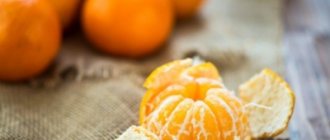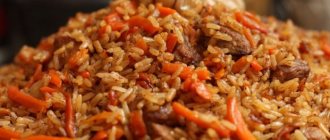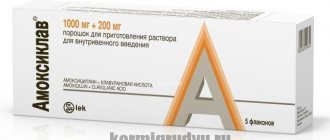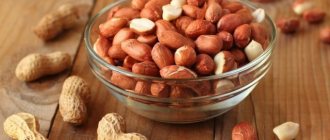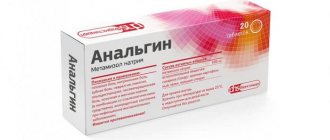Chewing gum is a very popular product that is used to normalize the pH in the oral cavity. Many people report decreased irritability and improved concentration while chewing gum. Is this product safe for women during breastfeeding?
Any chewing gum contains chemical components that affect metabolic processes and hormonal levels in the body. This is important for nursing mothers to consider.
Composition of chewing gum
Each chewing gum contains a substance - aspartame, which is a substitute for regular sugar. This substance is used by people suffering from diabetes. The safety of aspartame for new mothers and newborns has not been fully studied. As a result of clinical studies, a negative effect of this substance on the hormonal levels of pregnant and lactating women was noted.
The latex base of chewing gum can cause an allergic reaction in a breastfed child. Many manufacturers include phenylalanine in their product. The entry of this substance into the body is strictly contraindicated for children suffering from a hereditary disease - phenylketonuria.
In addition to the substances mentioned, regular chewing gum contains a whole range of dyes, sweeteners, flavors and other chemical components.
Chewing gum and breastfeeding
Using chewing gum does not provide a young mother with a guarantee of protection against caries. If a woman pursues this goal, then she should replace chewing gum with rinsing her mouth with boiled water and using dental floss.
Some gum contains sugar, which contributes to the rapid destruction of tooth enamel and the removal of calcium from it. Calcium loss is especially undesirable for nursing mothers, who have been deficient in this element since pregnancy.
If caries develops as a result of chewing gum, a nursing mother may require dental services, which are not always appropriate during lactation. When chewing gum, there is a high risk of breaking the integrity of the fillings. This occurs due to the creation of a vacuum between the chewing gum and the surface of the filled tooth. About when you need to start treating your teeth and how to avoid caries during lactation, read the article at the link https://vskormi.ru/mama/lechenie-i-udalenie-zubov/.
The previously mentioned dyes contained in chewing gum can have a toxic effect on the body of the mother and child. Some of them can cause the growth of benign and malignant tumors.
Regular chewing gum belongs to the list of those products that are addictive.
The use of this product during breastfeeding can lead to the following consequences:
- development of severe allergic reactions in the body of the mother and newborn child;
- toxic effects of phenylalanine and aspartame on the body of a newborn baby;
- destruction of dental crowns and fillings in a nursing mother during chewing;
- increased risk of developing gastritis, gastric and duodenal ulcers in a nursing woman.
Everything that a nursing woman consumes automatically passes into breast milk and then into the body of the newborn baby. Chewing gum often contains glutamate, which contributes to the death of nerve cells in the body of the mother and child. In addition, regular chewing gum reduces appetite, which can lead to disruption of the diet of a nursing woman.
The question of whether this product can be consumed by a nursing mother is rhetorical. On the one hand, moderate consumption does not lead to the development of severe consequences, but on the other hand, no one is immune from this risk. The final choice remains with the young mother. If a woman cares not only about her health, but also about the health of her newborn baby, then she is recommended to refrain from consuming this product.
This product has little hygienic activity compared to toothpastes, but the harm from its use is noticeable for the entire body. During the period of formation and adaptation of the child's body, a nursing woman is recommended to refrain from consuming such aggressive products as chewing gum.
Can these fruits be included in a child's diet?
Maybe only in this case maximum caution should be observed, since the baby’s body is highly sensitive. So, you need to follow these rules:
- When the first tasting is carried out, the baby can be given very little flakes (to be more specific - no more than 3 tablespoons). The product can be served in any form (with milk, water, provided that it is not introduced into the diet in dry form).
- In the first 2 days, you need to carefully monitor the reaction of the baby’s body; the slightest changes in intestinal function should warn the young mother. An important negative manifestation is a rash on the skin.
We suggest you familiarize yourself with: Hydrocele of the testicle (hydrocele) in a man, in a boy, in newborns - description and causes of the disease, symptoms and diagnosis, treatment (surgery, puncture), swelling after surgery
From what age?
As already mentioned, a three-month-old baby can already have corn flakes in complementary foods (if there are no special restrictions in the form of an allergic reaction). If, after starting to consume such a product, the baby’s body does not show itself with negative manifestations, then the amount of complementary foods can be increased. A baby can consume a maximum of 70 grams of product per day, but not more than 250 grams per week.
Despite the fact that there are a lot of useful substances here, experts recommend that in the first six months after lactation you eat corn flakes cooked not with milk, but with water. Milk contains cow protein, which can be dangerous.
Then, gradually, the water can be diluted with milk, and corn flakes can be completely cooked in milk when the baby has reached the age of six months. The baby's first complementary feeding is often carried out with just such a product.
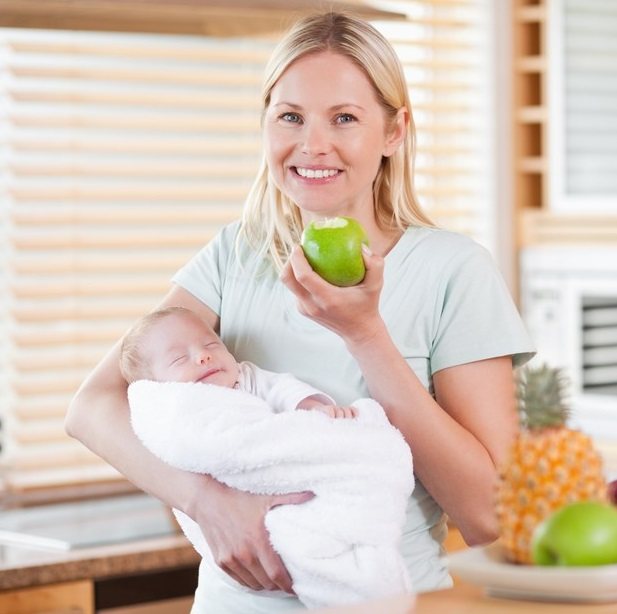
According to a leading specialist in the field of pediatrics, Evgeniy Komarovsky, apples will be the best solution as the first complementary food for an infant (up to one year). However, fruit feeding should be correct and only from a certain age.
From what age?
Babies at the complementary feeding stage can start giving apples as early as 5 months.
Attention! Under no circumstances should fruit be given in large slices (or in solid form at all), otherwise the child risks choking.
How to use?
Apples are introduced into the baby’s diet in the form of puree, juice, compote, or baked (if there is a risk of allergic reactions). The number of first servings should not exceed 1 tsp.
How are they useful for the baby?
Green apples are a storehouse of a large number of substances useful for the child’s body (vitamins, fiber, minerals, flavonoids). The beneficial properties of the fruit include the following features:
- Improves digestion and removes harmful elements from the intestines.
- Eliminates constipation and normalizes stool.
- Increases appetite and quenches thirst.
- Prevents the occurrence of colds and infections.
- Charges the baby with energy and vigor.
- Provides gum massage and destroys bacteria in the oral cavity.
Symptoms and diseases that can be caused by chewing gum
- Skin rashes.
- Irritation of the oral mucosa.
- Bronchial asthma.
- Dysbacteriosis.
Similar symptoms may occur in some people who are most sensitive to the components of chewing gum.
Sweeteners can also have a negative effect. It’s just that all this chemical garbage accumulates in the body over time and causes allergies. When you see the inscription E171, it is better not to take this product, as it contains titanium white. There are chewing gums with pictures and stickers that release styrene. This substance is a real poison and is very harmful to the child’s body.
Think a hundred times before you put an unknown quality gum into your child’s or yourself’s mouth.
Is it possible to chew gum during breastfeeding, which one to choose, what to replace it with? Composition, benefits and harms of the product
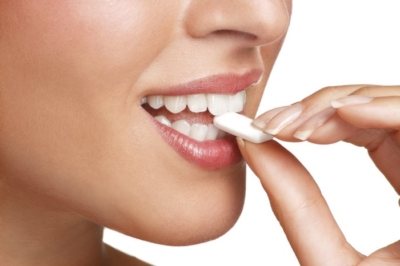
We see chewing gum everywhere - at store checkouts, on the counters of stalls, in advertising. She has become a constant companion of modern man. But there is debate about the harm and benefits of chewing gum for the body. This topic is especially relevant for nursing mothers - after all, they are responsible not only for themselves, but also for the health of the baby. We'll figure out whether you can chew gum if you're breastfeeding.
Why use chewing gum?
Chewing gum is chewed for several reasons:
- Chewing gum freshens breath. This is especially useful if you work with people or are going on a date.
- After eating, chewing gum is used to get rid of food debris. This is believed to help prevent tooth decay.
- Chewing and blowing bubbles helps calm you down.
- Chewing gum is useful for those who fly on airplanes. Chewing movements help relieve ear congestion during takeoff and landing.
- Chewing gum is a tribute to fashion. Many became addicted to it after seeing bright advertisements. It is known that it was commercials that contributed to the fact that people began to put two pillows in their mouths instead of one.
- At the end of the day, chewing gum is simply delicious and enjoyable.
Why do they chew gum?
Chewing gum is a special confectionery product, the use of which brings practical benefits.
Useful benefits of chewing gum
Cleaning the mouth
Chewing gum has the ability to normalize the acid-base balance of pH after eating. Small particles of food remaining in the mouth are attached to its elastic substance. In addition, the chewing process massages the gums and freshens the breath.
Impact on mental processes
Chewing gum has a beneficial effect on a number of mental processes. It makes a person less irritable and at the same time more collected and concentrated. Insulin produced during chewing helps improve memory. It is also important to accelerate the metabolic process, and the nerve endings of the brain during the chewing process transmit a signal of saturation to the brain, so it is believed that chewing gum is useful for a person who is following a weight loss program.
Composition of the product
While breastfeeding, some substances are undesirable to use. Let's look at the composition of this product. Chewing gum comes in different flavors, but their basic composition is very similar. Let's see what substances these are and whether they can cause harm.
Aspartame
Aspartame is an intense sweetener. It gives the chewing gum its flavor. Information about its safety is mixed. Previously, this substance was banned in the United States, but then the decision was reversed.
There have been cases where aspartame caused headaches and nausea.
The fact is that aspartame contains wood alcohol. When heated, it turns into formaldehyde and then into formic acid. This disrupts the acid balance in the body.
It is reliably known that it is not recommended to consume more than 40 mg per kilogram of body weight of this substance per day.
Phenylalanine
Phenylalanine is an amino acid that the body needs to break down proteins. Its source in chewing gum is aspartame. It is dangerous for people who lack enzymes that break down phenol.
Monosodium glutamate
This is the most common food additive - a flavor enhancer. Glutamate can be found in many foods. This substance is found in meat and vegetables, and for the food industry it is synthesized from bacteria.
“Artificial” glutamate is practically no different from “natural” glutamate. According to scientists, it is harmless in moderation. With frequent use, it can cause mild overstimulation of the nervous system or an allergic reaction. The danger of the substance is that it makes food more tasty and makes us overeat.
You can hear opinions that monosodium glutamate can cause blindness, tumors and even autism. This information is not supported by research and is still considered speculation.
Latex
Latex is the chewing base of gum. Due to it, under the influence of temperature in the oral cavity, the chewing gum softens. The chewy base is the base for the other ingredients.
Latex in chewing gum can be natural or synthetic. It is considered harmless, but there have been no major studies on the safety of latex.
Sugar
Sugar is harmful to tooth enamel. When consumed in excess, sugar becomes a breeding ground for microbes and causes tooth decay.
Dyes, flavors
Dyes and flavors give the chewing gum a nice look and a pleasant smell. They can cause allergies as they are obtained chemically.
Can pregnant women chew gum? The benefits and harms of chewing gum during pregnancy
Today there is a huge variety of chewing gum on the market. Some of its types are designed to freshen breath, others - to clean and whiten teeth, and others - have a very pleasant taste and aroma, which both children and adults like so much. Numerous advertisements convince TV viewers of the need to chew gum every time after eating, and many of us have already become a habit.
Pregnant women are no exception.
As a rule, only after learning about the upcoming replenishment, each expectant mother makes some changes to her usual lifestyle and refuses certain products that may be unsafe for her health or the life of the unborn baby.
In particular, women often wonder whether pregnant women can chew gum, or whether it is better to give up this habit for a while. We will tell you about the benefits and harms of chewing gum, as well as why women in an “interesting” position should not use it in this article.
How can chewing gum be useful during pregnancy?
In fact, the only beneficial quality that chewing gum has is that it effectively and quickly freshens breath. The fact that chewing gum cleans teeth well is nothing more than a myth started by chewing gum manufacturers, which they use to attract a large number of customers.
In reality, chewing gum only slightly cleans the outer surface of the teeth and does not in any way touch the spaces between them. In addition, it does not destroy tartar and pathogens that provoke the formation of unpleasant plaque on the teeth.
It is much better and safer to use various balms to freshen breath instead of chewing gum, the effectiveness of which has been confirmed by numerous clinical trials and professional dentists.
Why shouldn't pregnant women chew gum?
During pregnancy, the body of the expectant mother works for two, and she gives a huge part of the vitamins and minerals to her future son or daughter.
In particular, during pregnancy there is a significant outflow of calcium and fluoride - minerals that are responsible for the condition of bone tissue and our teeth.
This is why pregnant women often notice that their teeth begin to crumble, and the enamel becomes very thin and destroyed.
Regular use of chewing gum during pregnancy can cause fillings to fall out, which will be quite difficult to replace, because the expectant mother cannot always go to the dentist. In some cases, dental treatment, especially with the use of anesthesia, may be contraindicated during this period of time. In addition, most chewing gums have a negative effect on the condition of tooth enamel due to their high sugar content.
If the chewing gum does not contain sugar, then it contains a sweetener - aspartame. One of the components of this substance is the amino acid phenylalanine, which can negatively affect the balance of hormones of both a pregnant woman and her unborn baby. In addition, most chewing gums contain all kinds of dyes and flavors, the properties of which and their effect on the fetus have not been sufficiently studied. In any case, it is better not to use unnecessary chemicals during pregnancy, as they can provoke various allergic reactions.
Finally, as you know, chewing gum promotes the secretion of large amounts of gastric juice. Under its influence, stomach tissue is destroyed if no food enters it. This is why doctors do not recommend chewing gum for more than 15 minutes at a time. While you are expecting a baby, the process of tissue destruction proceeds much faster, so it is better not to chew gum at all during pregnancy.
Of course, the question of whether pregnant women can chew gum is controversial.
Many girls do not attach importance to the harmful effects of this product and believe that chewing gum a couple of times a week is absolutely safe. Others, on the contrary, limit themselves in everything, and chewing gum is no exception for them.
In any case, whether it is possible to use chewing gum during the period of bearing a child, every expectant mother must decide for herself, carefully weighing all the pros and cons.
mjusli.ru
Is it possible for a nursing mother to wear such a rubber band?
During breastfeeding, women are advised to be especially careful. Everything that affects her body also affects the baby through milk.
There have been no studies on the effects of chewing gum on nursing mothers and children. Therefore, the entire responsibility for making a decision lies with you. Chewing gum will not cause critical harm, but you should not abuse it; first of all, you should understand the reasons why your mother needs chewing gum:
- If it becomes a substitute for brushing teeth, because the woman cannot leave the child for even a minute, the mother needs to organize help. Let one of the relatives stay with the baby while the mother takes time for herself.
- For the same reason, you cannot suppress hunger by chewing.
- A breastfeeding woman should eat well. If chewing gum is masking bad breath, you should visit a doctor to check your oral health and digestive system.
From what month of breastfeeding of a newborn?
You can chew gum from birth. But do it after feeding.
Which one is better to choose?
If you can't give up chewing gum, you should choose the safest options. Choose chewing gum that does not contain aspartame. Chewing gum with strong flavors and odors (especially for children) is best avoided. They contain too many sweeteners, colors and flavors. Large manufacturers, e.g.
Orbit or Dirol undergo rigorous testing, so their products are considered safer.
Benefits and harms
It is impossible to say unequivocally whether chewing gum is dangerous or not. As with any product, harm can occur if consumed in excess. Here are the possible negative effects:
- The mother or baby may be allergic to any component in the composition.
- Controversial substances aspartame and monosodium glutamate can negatively affect your baby.
- A filling or crown may fall out. This is bad because they will have to be changed, and many medications cannot be used during hepatitis B. Moreover, it is difficult for mothers to find time to go to the doctors.
- Chewing and secretion of large amounts of gastric juice lead to the development of gastritis and stomach ulcers.
And these are the beneficial effects:
- Chewing gum reduces appetite and helps you lose weight.
- Cleaning your mouth will help prevent tooth decay. And when you don't have time to brush your teeth, chewing gum is better than nothing.
How much is it permissible to chew?
It is recommended to chew gum after eating for no longer than five minutes.
During this time, the oral cavity is cleansed. Then chewing gum simply causes gastric juice to be produced and the jaw to work, and all this without any benefit.
How many sweets can a nursing mother eat per day and how to properly introduce treats into her diet?
- All fermented milk food intended for mother and baby must be exclusively fresh. Shelf life: up to 3 days in the refrigerator.
- Suitable fat content - products with low and medium fat content are optimal (cottage cheese - 5-9%; kefir - 1-2.5%; fermented baked milk and yogurt - 2.5-4%; sour cream - 15-25%). Low-fat and overly fatty are not your choice.
- The best time to use is in the evening, when calcium is best absorbed by the body.
- Servings: cottage cheese - 100-150g, kefir and yogurt - up to 2 glasses, fermented baked milk - 1 glass, sour cream - 10-30g.
- Do not buy fatty yoghurts and curds with additives; it is better to sweeten them at home with honey or fruit yourself. Do not season cottage cheese with condensed milk, full-fat sour cream and jam. You can add plain yogurt or light sour cream.
Eat fermented milk products during lactation with pleasure - this is an excellent choice for health and beauty.
You need to be careful when introducing sweets into a nursing woman's diet. Eat a small piece of candy in the morning. Monitor your baby's reaction to the new product. If within two days the child does not develop redness, colic or stool disturbance, then the next day you can slightly increase the amount eaten.
We invite you to read: Fashionable and stylish jeans for pregnant women – how to choose?
It is recommended that a nursing mother consume no more than three sweets per day.
What to do if swallowed, is it dangerous for mother and baby?
Sometimes it happens that due to carelessness we swallow chewing gum. Is this dangerous for mother and baby? Let's figure it out.
Breast milk consists of fats and proteins that are synthesized inside the mother's body. The body receives materials for the synthesis of breast milk from food that is absorbed by the intestines.
Swallowed chewing gum is not absorbed by the intestines and leaves the body naturally. Therefore, it does not affect the chemical composition of breast milk.
The best thing you can do after swallowing gum is not to worry. Mom's anxiety will do much more harm to the child than chewing gum.
What can be replaced?
If you are hungry or nervous, you can chew a carrot or an apple instead of gum. Coffee beans will help freshen your breath. Sugar-free chewing marmalade can also be a substitute.
Chewing gum will not cause much harm to the mother and breastfed baby. But it contains ambiguous components. For oral hygiene, chewing gum is less effective than a toothbrush. Therefore, if giving up chewing gum does not cause you discomfort, it is better to replace it with healthier alternatives. Be healthy!
A little history
Analogues of chewing gum have appeared a long time ago. Since ancient times, people have chewed tree resins and rubber, although today it is difficult to say exactly for what purpose. The very first chewing gum dates back to the Stone Age, 7th–2nd millennia BC. It was found during excavations in Northern Europe and consisted of pieces of prehistoric resin with imprints of human teeth.
In 1848, American entrepreneur John Curtis launched the production of some kind of modern elastic band. Chewing gum, as we now understand it, was invented by William Finley Sample in the United States in 1869. At the end of the 19th century, factories began to open everywhere in the United States producing chewing gum with various flavors: licorice, cream, sugar. At the same time, they began to sell chewing gum wrapped in wrapping paper. In 1928, chemist Walter Diemer made an important change in chewing gum production technology. He invented a special formula that made it easy to blow bubbles out of chewing gum. In the 1970s, on the eve of the Olympics, the production of Soviet chewing gum began, but in the 1990s, domestic chewing gum was replaced by imported competitors. Modern advertising of chewing gum convinces the consumer that chewing gum protects against caries and removes plaque, let's try to figure out if this is true?
Can a baby eat cake?
After a year, sweets begin to be introduced into the child’s diet, but they should be healthy:
- marshmallows;
- paste;
- marmalade;
- jellies and mousses.
We suggest you read: Is it possible for pregnant women to brew and drink rose hips?
Opinions differ regarding the presence of the cake in the form in which we imagine it. A cream cake is clearly not the best choice; it would be much healthier to bake a carrot cake, or make a milk and berry mousse dessert.
From what age?
A cake with cream (especially store-bought) should not be given to a child under 3 years old. However, you can try a mousse cake or a piece of biscuit with condensed milk as early as one and a half years old. The first piece should be very small - literally a teaspoon. If the baby tolerates it well, then you can eat no more than 30-50 g of cake per day, once a week.

